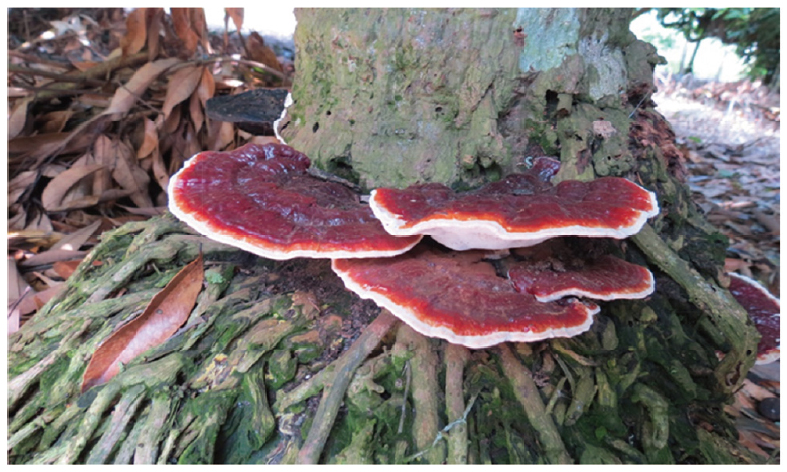All issues

Author:Jyh-Nong Tsai, Pao-Jen Ann*, Chu-Ping Lin, and Hui-Ling Tsai
Abstract:
From 2006 to 2012, a total of 32 isolates of Ganoderma sp. were isolated from betel palm in seven orchards located at Kaohsiung City, Neipu and Wanluan of Pingtung County, and Caotun of Nantou County in Taiwan. In the field, Ganoderma could infect root and stem base of betel palm, causing root and stem base brown rot and necrosis, and eventual death. Basidiocarps emerging from stem base of the diseased betel palm were stipitate, or sessile. Upper surface of pileus was brown to dark, red-brown, and laccate. Pore surface was pale yellow to grey and pores were circular to oval. Basidiocarps could be produced when cultured on sawdust medium, but were smaller in size than those grown in the field. Inoculation of purified Ganoderma isolates on betel palm showed brown rot symptom, and the same Ganoderma was reisolated, confirming the pathogenicity. Based on morphological characteristics, including fruiting body, pore surface and basidiospores, and result of ITS region (ITS1-5.8S rDNA-ITS2) sequence similarity searching, done via Basic Local Alignment Search Tool (BLAST) provided from National Center for Biotechnology Information (NCBI), Ganoderma infecting betel palm in Taiwan was identified as Ganoderma boninense.
Key words:Betel palm, Ganoderma boninense
Download:![]() PDF Links
PDF Links
- 1. Development of Tractor-Mounted Seedling Transplanter for Sweet Potato
- 2. Synergistic Effect of Additional Gas on the Toxicity of Phosphine to Sitophilus oryzae and Sitophilus zeamais (Coleoptera: Dryophthoridae)
- 3. Effects of Temperature and Solar Radiation on Growth Traits and Plant Elements in Purple Leafy Sweet Potato
 Submit your manuscript
Submit your manuscript
 Guide for authors
Guide for authors